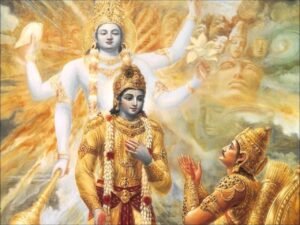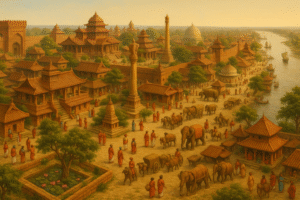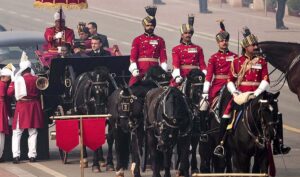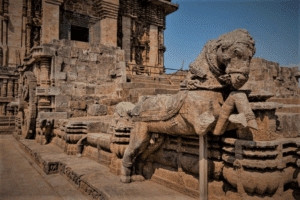
I. Introduction
The Gupta Empire, often celebrated as India’s Golden Age, marks a period of exceptional cultural, scientific, and political advancements. This era, spanning from the early 4th to the late 6th century CE, saw the flourishing of art, literature, mathematics, and more, laying down a rich legacy that has influenced the subcontinent’s history profoundly. The Gupta rulers, particularly Chandragupta I, Samudragupta, and Chandragupta II, were instrumental in creating an empire that became synonymous with prosperity, innovation, and cultural efflorescence. This article delves into the origins, achievements, and enduring legacy of the Gupta Empire, exploring why it remains a pivotal chapter in Indian history.
II. Origins and Rise of the Gupta Empire
The Gupta Empire’s foundation is credited to Sri Gupta, a lesser-known regional ruler whose dynasty would eventually rise to unparalleled prominence. His successor, Ghatotkacha, also played a significant role, but it was under Chandragupta I (c. 320-335 CE) that the empire truly began to expand and consolidate its power. Through strategic marriages, notably to Kumaradevi of the Licchavi clan, Chandragupta I forged powerful alliances that strengthened his position.
Chandragupta I’s expansionist policies laid the groundwork for a centralized and robust administration. His establishment of Pataliputra as the capital marked the beginning of the empire’s golden phase, allowing for effective governance and control over a vast territory. The foundations laid by Chandragupta I would be built upon by his successors, particularly Samudragupta, who expanded the empire through military conquests, and Chandragupta II, who presided over a period of unparalleled cultural and scientific achievements.
III. Major Rulers and Their Contributions
- Chandragupta I (c. 320-335 CE): The Architect of the Gupta Dynasty Chandragupta I, regarded as the true founder of the Gupta Empire, not only expanded its territories but also established a strong administrative framework. His reign marked the beginning of a unified North India, as he skillfully negotiated and solidified alliances with powerful neighboring clans. The marriage alliance with Kumaradevi was a masterstroke, bringing the Licchavi kingdom into the Gupta fold and securing the empire’s northern frontiers.Under Chandragupta I, the empire’s boundaries began to stretch across the Gangetic plains, encompassing vital trade routes and fertile lands. His strategic foresight in centralizing power and strengthening administrative mechanisms set the stage for the empire’s golden age, which would unfold under his successors.
- Samudragupta (c. 335-375 CE): The Conqueror and Patron of the Arts Samudragupta, Chandragupta I’s son, is often hailed as one of India’s greatest military geniuses. His campaigns, detailed in the Allahabad Pillar inscription, showcase a ruler who was relentless in expanding his empire. Samudragupta’s conquests stretched from the Himalayas to the deep south, earning him the title of “Napoleon of India.”Beyond his military prowess, Samudragupta was also a great patron of the arts. His court was a vibrant hub of cultural activity, attracting poets, musicians, and scholars. Samudragupta himself was a talented poet and musician, embodying the ideal of a warrior-king with a deep appreciation for culture. His reign was marked by a synthesis of military expansion and cultural patronage, laying a strong foundation for the flourishing of arts and sciences in the Gupta Empire.
- Chandragupta II (c. 380-415 CE): The Zenith of Gupta Glory Chandragupta II, also known as Vikramaditya, is credited with leading the Gupta Empire to its zenith. His reign is often referred to as the golden period within the Golden Age. Chandragupta II’s rule was characterized by military victories, including the defeat of the powerful Shaka dynasty, which secured western India and its lucrative trade routes.Under Chandragupta II, the empire witnessed unprecedented prosperity. He maintained a strong and efficient administration, ensuring peace and stability across the empire. This stability fostered a cultural renaissance, with advancements in art, literature, and science reaching new heights. The court of Chandragupta II was graced by luminaries such as Kalidasa, whose works remain classics of Sanskrit literature.
- Kumaragupta I (c. 415-455 CE): The Defender of the Empire Kumaragupta I, the son of Chandragupta II, inherited an empire at the height of its power. His reign, while marked by external threats, particularly from the Huns, saw the continuation of the Gupta tradition of cultural patronage. Kumaragupta is credited with defending the empire against the Hun invasions, preserving its territorial integrity.He also supported religious and cultural institutions, most notably the Nalanda University, which became a renowned center of learning during his reign. Kumaragupta’s ability to maintain the empire’s prosperity in the face of growing external pressures is a testament to the strength of the Gupta administrative and military systems.
List of Gupta Emperors
- Sri Gupta (c. 240 – c. 280 CE)
- Founder of the Gupta dynasty.
- Ghatotkacha (c. 280 – c. 319 CE)
- Son of Sri Gupta, continued the expansion of the empire.
- Chandragupta I (c. 319 – c. 335 CE)
- Established the Gupta Empire’s power, married Kumaradevi, a Lichchhavi princess.
- Samudragupta (c. 335 – c. 375 CE)
- Known as the “Napoleon of India,” expanded the empire significantly.
- Chandragupta II (Vikramaditya) (c. 375 – c. 415 CE)
- Ushered in the golden age of the Gupta Empire, known for cultural and economic prosperity.
- Kumaragupta I (Mahendraditya) (c. 415 – c. 455 CE)
- Maintained stability and prosperity, dealt with internal and external challenges.
- Skandagupta (c. 455 – c. 467 CE)
- Faced the Hun invasions, marked the beginning of the empire’s decline.
- Purusha Gupta (c. 467 – c. 472 CE)
- Lesser-known emperor with a short reign.
- Kumaragupta II (c. 472 – c. 479 CE)
- Attempted to maintain the empire amidst growing external pressures.
- Buddhagupta (c. 479 – c. 495 CE)
- Continued efforts to stabilize the empire.
- Narasimhagupta (c. 495 – c. 530 CE)
- Struggled against the Huns and other threats.
- Kumaragupta III (c. 530 – c. 540 CE)
- Faced further challenges in maintaining the empire’s integrity.
- Vishnugupta (c. 540 – c. 550 CE)
- Last known ruler of the Gupta dynasty, marking the end of the classical Gupta period.
IV. Territorial Extent and Administration
At its height, the Gupta Empire spanned a vast region, encompassing much of northern India, parts of central India, and areas of what is now Bangladesh. The empire’s territorial extent was a result of both strategic military conquests and the assimilation of surrounding kingdoms through diplomacy and marriage alliances.
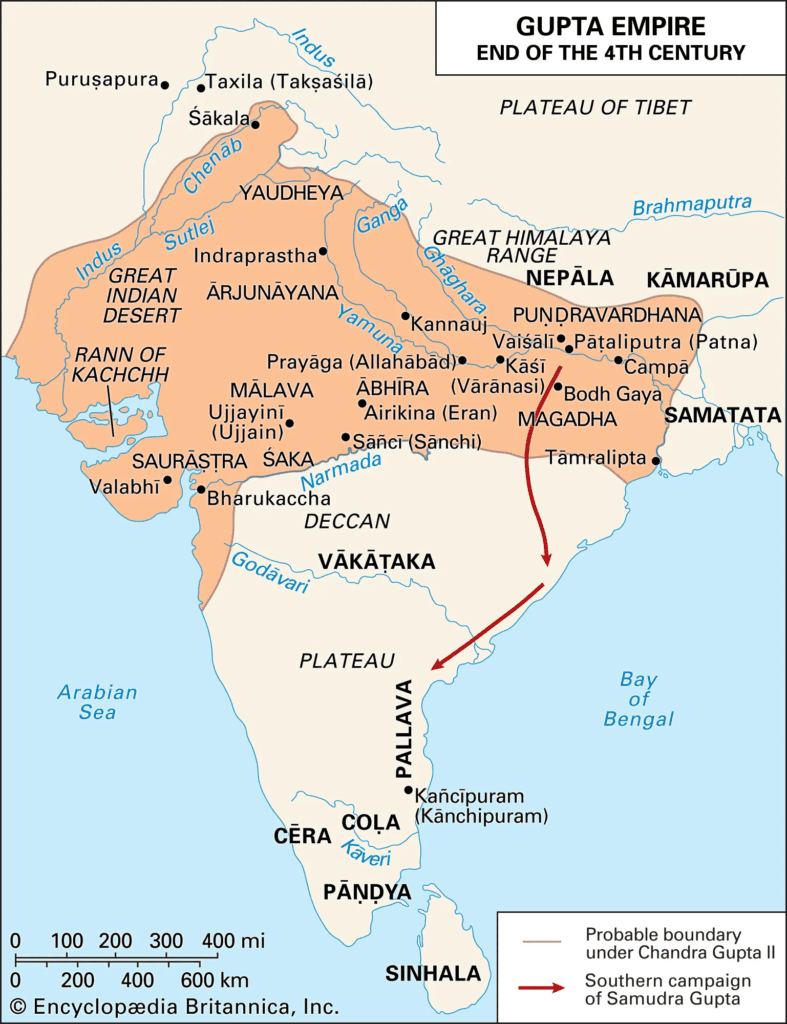
The administrative system of the Gupta Empire was highly organized and efficient, with a hierarchical structure that allowed for effective governance of a large and diverse territory. The empire was divided into provinces, each governed by a provincial head, often a member of the royal family or a trusted noble. These provinces were further divided into districts, each managed by local administrators responsible for collecting taxes, maintaining law and order, and ensuring the implementation of imperial policies.
Taxation in the Gupta Empire was well-structured, with taxes collected on land, trade, and produce. This revenue was used to fund the empire’s military campaigns, public works, and the patronage of arts and culture. The capital city, Pataliputra, was the administrative and cultural heart of the empire, a bustling metropolis that attracted scholars, artists, and traders from across the region.
V. Military Prowess and Expansion
The military strength of the Gupta Empire was one of the key factors behind its expansion and consolidation. The empire’s army was well-organized, consisting of infantry, cavalry, elephants, and a strong navy. Samudragupta’s military campaigns are particularly noteworthy for their scale and success, as he expanded the empire’s borders through a combination of force and diplomacy.
One of the Gupta Empire’s significant military achievements was the defeat of the Shakas in western India by Chandragupta II. This victory not only expanded the empire’s territory but also secured important trade routes, enhancing the empire’s wealth and influence. The Guptas also maintained a strong naval presence, which was crucial in controlling trade across the Indian Ocean and ensuring the empire’s economic prosperity.
The empire’s military strategies were innovative and adapted to the diverse geographical challenges of the Indian subcontinent. The Guptas employed a combination of direct military action, alliances, and vassal states to maintain control over their vast empire. Their ability to project power across such a large area was a testament to their military prowess and administrative efficiency.
VI. Cultural and Scientific Achievements
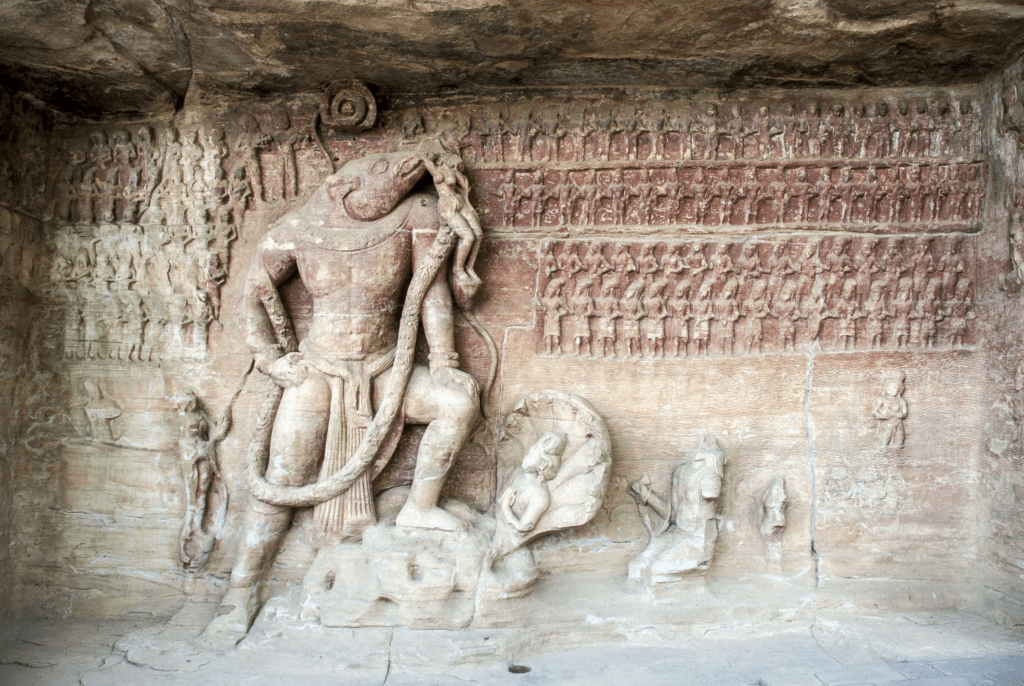
- Literature and Arts: A Flourishing of Creativity The Gupta period is renowned for its contributions to literature, particularly in the field of Sanskrit. The most celebrated literary figure of this era is Kalidasa, whose works, such as “Shakuntala” and “Meghaduta,” are considered masterpieces of classical Indian literature. Kalidasa’s writings reflect the rich cultural and intellectual life of the Gupta Empire, combining lyrical beauty with deep philosophical insight.In addition to literature, the Gupta period saw significant advancements in art and architecture. The Ajanta caves, with their exquisite murals and sculptures, are a testament to the artistic achievements of this era. Gupta architecture is characterized by the development of the shikhara (spire) in temple construction, which would become a defining feature of Indian temple architecture in the centuries to follow.
- Science and Mathematics: The Age of Innovation The Gupta Empire is often celebrated as a golden age of scientific discovery and innovation. One of the most notable figures of this period is Aryabhata, a pioneering mathematician and astronomer. Aryabhata’s work, the “Aryabhatiya,” introduced the concept of zero as a number, a development that had a profound impact on mathematics not just in India, but around the world. He also made significant contributions to the understanding of planetary motion and the calculation of the circumference of the Earth.Advances in medicine were also significant during the Gupta period. The compilation of medical texts, such as the “Sushruta Samhita,” provided comprehensive knowledge on surgery, anatomy, and various medical treatments. The Gupta period’s emphasis on learning and intellectual pursuits laid the groundwork for future generations of scholars and scientists.
- Religious Influence and Tolerance: A Pluralistic Society The Gupta Empire is often noted for its religious tolerance and support for various faiths, including Hinduism, Buddhism, and Jainism. While the Gupta rulers were primarily Hindu, they were patrons of all religions, supporting the construction of temples, stupas, and monasteries.
- Hinduism and Religious Architecture: The Gupta rulers, particularly under Chandragupta II, heavily promoted Hinduism, leading to the construction of elaborate temples dedicated to deities like Vishnu and Shiva. The period also witnessed the composition of key Hindu texts, such as the “Puranas,” which codified religious practices and mythologies. Gupta art from this period often depicted Hindu themes, reflecting the era’s religious devotion.
- Buddhism and Jainism: Despite the Hindu focus, the Guptas were tolerant of other religions. Buddhist monasteries, particularly in the eastern regions of the empire, thrived during this period, contributing to the spread of Buddhism beyond India. The empire also saw the continuation of Jain traditions, with Jain texts being compiled and preserved.
- Education and Learning: The Gupta Empire was a center for education and scholarship. Institutions like the Nalanda University attracted students from across Asia, becoming a hub for Buddhist learning and other subjects such as logic, grammar, and medicine. This period saw the rise of scholarly works that would influence Indian thought for centuries.
VII. The Decline of the Gupta Empire
The decline of the Gupta Empire was gradual, beginning towards the end of the 5th century CE. The empire, which had enjoyed unprecedented prosperity and stability, began to weaken due to a combination of internal and external factors.
- Succession Issues and Weak Rulers: After the reign of Kumaragupta I, the Gupta dynasty faced challenges related to succession. The lack of a strong and capable leader led to internal power struggles and weakened central control, which destabilized the empire.
- Invasions by the Huns: The empire faced significant pressure from the Huna invasions, particularly under the leadership of Toramana and Mihirakula. These invasions devastated large parts of northern and central India, leading to a loss of territory and weakening the Gupta’s control over their empire.
- Economic Strain and Administrative Challenges: The constant warfare and the need to maintain a large army put a strain on the empire’s resources. Over time, the administrative structure that had once been the backbone of the empire began to erode, leading to corruption and inefficiency.
- Fragmentation of the Empire: As the central authority weakened, various provinces and local rulers asserted their independence. This fragmentation led to the eventual dissolution of the Gupta Empire into smaller, regional kingdoms, marking the end of India’s classical age.
VIII. Legacy and Impact on Indian History
Despite its decline, the Gupta Empire left a lasting legacy that shaped Indian civilization in profound ways.
- Cultural Renaissance: The cultural achievements of the Gupta period continued to influence Indian art, literature, and architecture for centuries. The temple architecture developed during this period became the blueprint for future Indian temple designs, and the literary works, particularly in Sanskrit, set standards for classical literature.
- Scientific and Mathematical Contributions: The advancements made during the Gupta period, particularly in mathematics and astronomy, had a lasting impact not only on India but on the world. The concept of zero, the decimal system, and Aryabhata’s astronomical theories are considered foundational contributions to global knowledge.
- Religious and Philosophical Thought: The Gupta period was instrumental in the consolidation of Hinduism as the dominant religion in India. The religious texts and practices codified during this time formed the basis of Hindu religious life for centuries. The empire’s support for other religions like Buddhism and Jainism also facilitated their spread across Asia.
- Historical Influence: The Gupta Empire is often compared to other great empires of the world, such as the Roman and Han empires, for its contributions to human civilization. It set the stage for the future development of Indian society, politics, and culture, and its legacy continues to be celebrated in modern India.
The Gupta Empire’s era, often termed as India’s Golden Age, was a period of unparalleled growth in the arts, sciences, and cultural development. The empire’s influence extended far beyond its political boundaries, leaving a lasting impact on the Indian subcontinent and the world. From the reigns of Chandragupta I to Kumaragupta I, the Gupta rulers fostered an environment of prosperity and cultural efflorescence that shaped the course of Indian history. Despite its eventual decline, the Gupta Empire’s contributions to civilization remain a proud chapter in India’s rich historical tapestry.

